Before 68th Independence Day Of India
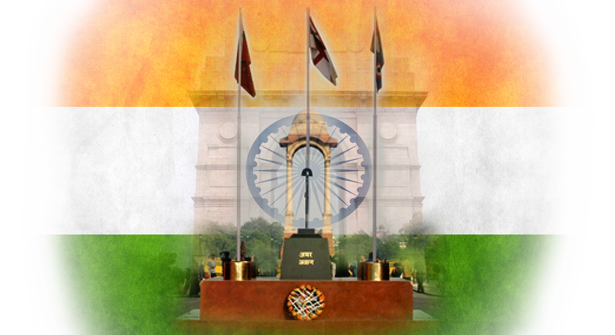
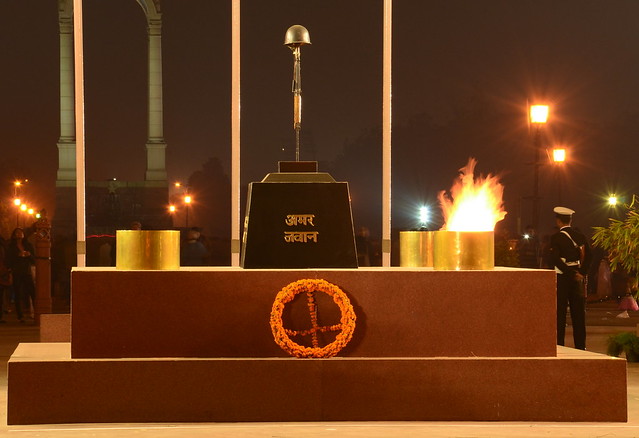
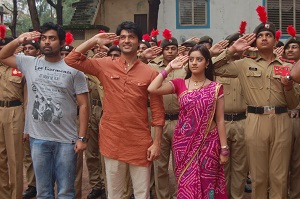
Before 68th Independence Day Of India



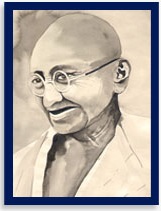
Mohan Das Karam Chand Gandhi was better known as mahatma Gandhi. He was born on 2nd October 1869 in Porbandar into the middle class Vaishya family. He was a son of Karamchand and Putlibai. He studied at the elementary school in porbandar till the age of seven and later at Rajkot. He was married to Kasturba at the age of thirteen while still in high school.During his school days he did not show any extraordinary trait, was a bit shy. He matriculated and went to England in 1888 for the study of law. Though his mother opposed this trip but the opposition was overcome by Gandhi's strict vow of not touching women, wine and meat in the foreign land. He passed his examination in 1891 and on 12th June 1891 sailed back to India. He remained in India for almost two years but could not establish himself as a successful lawyer. In 1893 he went to South Africa to fight a lawsuit on behalf of Dada Abdullah & Company. It was the place, which changed the course of Gandhi's life and the history of India. While traveling in a first class rail compartment, Gandhi was thrown out by railway officials just because a white man objected to his presence in the first class compartment. This and some other such incidents made Gandhi feel that being quiet will not do any good.
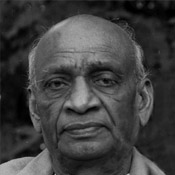
Vallabhbhai Jhaverbhai Patel
was one of the important social and political leaders of India. He played an
important role in India's struggle for freedom. He is believed to be born on
31st October 1875 at Nadiad, Gujarat and was often addressed as Sardar.
He did his matriculation at the age of 22. He
seemed to be an ordinary person to everyone around him, but had strong will
power. He wanted to become a barrister. At the age of 36, he went to England to
fulfill his dream and joined Middle Temple Inn. He completed his 36-month
course in just 30 months. After returning to India he became one of the most
successful barristers of Ahmedabad.
Inspired by the work and
philosophy ofMahatma Gandhi,
he joined India's struggle for independence. He organized peasants of Kheda,
Bardoli and other parts of Gujarat and launched non-violent Civil Disobedience
Movement in Gujarat, against the payment of raised tax, levied by the British
government. He succeeded in his goal and British government suspended the
payment of revenue for that year. With this he became one of the most
influential leaders in Gujarat. In 1920 he became the president of Gujarat
Pradesh Congress Committee and served in the post till 1945. He was a strong
supporter of the Non -Cooperation movement of Gandhi and worked against
alcoholism, Untouchability and caste discrimination in Gujarat. He was elected
as the municipal president of Ahmedabad in 1922, 1924 and 1927. When Mahatma
Gandhi was in prison, he led the Satyagraha in Nagpur in 1923 against the
British law, banning the raising of the Indian flag.
He was elected as a President of India National Congress in 1931. He was at the
forefront of the Congress's all India election campaign in 1934 and 1937 and
was a prominent leader in organizing the Quit India Movement in 1942. He was arrested prior to the Quit India
Movement and was released in 1945.
After India's independence, he became the first
Home Minister and Deputy Prime Minister of India. He organized relief camps for
refugees in Punjab and Delhi. He was the man behind the consolidation of 565
semi-autonomous princely states to form a united India. Patel was very attached
to Mahatma Gandhi. After Mahatma Gandhi's death his condition also started
deteriorating, he suffered a major heart attack within two months of Gandhi's
death. He died on 15th December 1950. He was a man of courage and determination
and in the true sense the 'Iron Man of India'.

The nation remembers the
legendary Bhagat Singh on his 105th birthday. His legacy prompted the Indian youth
to fight for the Independence of India and today in the modern India; Bhagat
Singh continues to be a youth icon. The Reserve Bank will shortly issue Rs.5
denomination coins to commemorate Bhagat Singh's Birth anniversary. The face of
the coin will display the portrait of 'Bhagat Singh' with words in Hindi and
English. The figures 1907-2007 will be shown below the portrait. It will be a
sincere tribute to the man who still inspires India and the world.
Bhagat Singh is often termed as the 'youth icon'
or the 'revolutionary of the youth' but his stature is one that equals some of
the prominent names in the Indian freedom struggle. His patriotism was not
restricted to the strong violent outburst against the British; he rather had a
mind and intellect of a genius who could foresee division of India on communal
lines which many of the much esteemed leaders of the time were unable to see.
Keeping the cause of country ahead of the religion was another signs of his
mature and rational mind. He was kind of a leader that his times were so
desperately in need of, when the British needed to be answered back in their
very tone. His educational qualifications establish the fact that his opinions
and ideas were well thought and not just a product of hysterical mass movements.
One of the most prominent revolutionaries of
India, Bhagat Singh was born on September 27, 1907 in a Sikh family in the
village of Banga in Layalpur district of present-day Pakistan. The third son of
Sardar Kishan Singh and Vidyavati, Bhagat Singh's father and uncle were members
of Ghadar party.
He was greatly attracted towards socialism.
Believed to be one of India's earliest Marxists, Bhagat Singh was one of the
leaders and founders of the Hindustan Socialist Republican Association (HSRA).
Bhagat Singh was deeply saddened by the Jalianwala Bagh massacre of 1919.
Though he participated in the Non-cooperation movement, he was disappointed
when Gandhi called off the agitation after the Chauri Chaura incident. He
studied at the National College in Lahore where he came into contact with other
revolutionaries such as Bhagwati Charan, Sukhdev and others. He fled from home
to escape early marriage and became a member of the organization Naujawan Bharat
Sabha.
Bhagat Singh was against individual acts of
terrorism and gave a clarion call for mass mobilization. In 1928 he came into
contact with another famous revolutionary Chandrasekhar Azad. The two combined
to form the 'Hindustan Samajvadi Prajatantra Sangha'. During the Simon
Commission's visit to India in February 1928, there were protests against the
Simon Commission's visit to Lahore. In one of these protests, Lala Lajpat Rai
was injured in a lathicharge and later on succumbed to his injuries. To avenge
Lajpat Rai's death, Bhagat Singh decided to kill the British official
responsible for the killing, Deputy Inspector General Scott. But he
accidentally shot Assistant Superintendent Saunders instead, mistaking him for
Scott.
Bhagat Singh threw a bomb in the Central
Legislative Assembly on April 8, 1929 and thereafter courted arrest. Bhagat
Singh, Sukh Dev and Raj Guru were awarded death sentence by a court for their
subversive activities. They were hanged on March 23, 1931. Bhagat Singh is seen
as the role model by a large number of young people in India. His sense of
sacrifice, patriotism and courage are something that will be revered and looked
upon by generations to come.
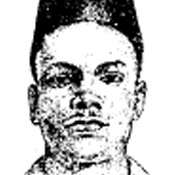
Shivaram Rajguru (1908-1931)
was a great Indian freedom fighter who played a major role in the India's
struggle for Independence. He is amongst those great Indian revolutionaries who
sacrificed their lives for the freedom of country. His full name was Hari
Shivaram Rajguru and was born into a Deshastha Brahmin family. Since his
childhood days, had witnessed the brutal atrocities that the Imperial British
Raj inflicted on India and her people. This instilled within him a strong urge
to join hands with the revolutionaries in a bid for India's freedom struggle.
In the days of the Indian Freedom Movement, the
Hindustan Socialist Republican Army (HSRA) was an active force working against
the British. Whilst their main motive was to strike fear into the heart of the
British regime, they simultaneously spread awareness amongst the people. They
made them take notice of the growing domestic uprising when they dealt crucial
blows with attacks like in the Lahore Conspiracy Case ( 18th December, 1928)
and the bombing of the Central Assembly Hall in New Delhi (8th April, 1929).
The protest against the
Simon Commission in October 1928 saw the British police lathi-charge the
protestors, severely injuring veteran leader Lala Lajpat Rai. Owing to the
excessive beating, Lala succumbed to his injuries, which thus instilled revenge
in the hearts of the revolutionaries. Thus, on 18th December, 1928 in
Ferozepur, Lahore, a planned retaliation was enforced that led to the
assassination of Deputy Superintendent of Police, J.P. Saunders. Shivaram
Rajguru along with Sukhdev Thapar were accomplices of the legendary Bhagat
Singh who spearheaded the attack. Rajguru then went into hiding in Nagpur.
Whilst taking shelter in the house of an RSS worker, he even met Dr. K. B.
Hedgewar. On his travel to Pune, however, Shivaram was finally arrrested.
Bhagat Singh, Shivaram Rajguru and Sukhdev Thapar were then convicted of their
crime and sentenced to death.
On 23rd March, 1931, the three brave
revolutionaries were hanged, whilst their bodies were cremated on the banks of
the River Sutlej. Shivaram Rajguru was only 23 years old when he became a
martyr for his country, however, he will always be remembered in the pages of
Indian history for his valor and dedication of his life towards India's
independence.

Subhash Chandra Bose is one
of the most dynamic leaders of India's struggle of independence. He is popularly
known as Netaji. He was born in Cuttack, in Orissa on January 23, 1897 to
Janaki Nath Bose and Prabhavati Devi. His father was a famous lawyer and his
mother was a religious lady. Among the fourteen siblings, he was the ninth
child.
Right from his childhood he was a bright student
and was a topper in the matriculation examination from the whole of Calcutta
province. He graduated from the Scottish Church College in Kolkata, West Bengalwith a First Class degree in Philosophy.
Influenced by the teachings of Swami Vivekananda, he was known for his
patriotic zeal as a student. He went to England to accomplish his parents'
desire to appear in the Indian Civil Services. In 1920 he appeared for the
competitive examination and stood fourth in the order of merit. Deeply moved by
the Jallianwalla Bagh massacre in Punjab, Subhash Chandra Bose left his Civil
Services apprenticeship midway and returned to India.
After he returned to India,
Subhash Chandra Bose was influenced by Mahatma Gandhiviews.
He then joined the Indian National Congress and worked under the leadership of
Deshbandhu Chittaranjan Das, who later became his political guru. He opposed
the Dominion Status for India declared by the Congress under the guidance of
the Motilal Nehru Committee. They were in favor of complete independence and
nothing else. In 1930, during the Civil Disobedience he was sent to jail and
released only after the Gandhi-Irwin pact was signed in 1931.
Subash Chandra Bose was exiled from India to
Europe; he took advantage of this opportunity and tried to establish political
and cultural ties between India and Europe by forming centers in the various
capital cities of Europe. He was jailed for a year for not obeying the ban on
his entry to India. Congress was elected in seven states during the general
elections of 1937 and he was released. Defying the ban on his entry to India,
Subash Chandra Bose returned to India and was again arrested and sent to jail
for a year. After the General Elections of 1937, Congress came to power in
seven states and he was released. Next year he was elected as the President of
the Haripura Congress Session. He took a very stern decision and brought a
resolution and asked Britishers to hand India over to the Indians within six
months.
Following opposition to his rigid stand, he
resigned from the post of president and formed the Forward Block. He fled to
Germany via Afghanistan and tried to persuade Germany and Japan to cooperating
against the British Empire. He then moved to Singapore from Germany in July
1943 and formed the Azad Hind Fauj (Indian National Army). The army comprised
mainly of Indians who were prisoners of war. The army crossed the Burma border,
and reached the Indian soil on March 18, 1944.
Japan and Germany were defeated in the Second
World War and a result the INA could not fulfill its objective. On August 18,
1945, Subhash Chandra Bose was declared killed in an air crash over Taipei,
Taiwan (Formosa). But there are people who believe that he is still alive and
many Commissions were set up to find the truth but nothing could be found about
his whereabouts

Sukhdev (1907-1931) was a
famous Indian revolutionary who played a major role in the India's struggle for
Independence. He is amongst those great Indian freedom fighters who sacrificed
their lives for the freedom of their country. His full name is Sukhdev Thapar and
he was born on 15th May, 1907. His ancestral house is in Naughara Mohalla of
Ludhiana city, Punjab, India. His father's name was Ram Lal. Since his
childhood days, Sukhdev had witnessed the brutal atrocities that the Imperial
British Raj had inflicted on India, which then led him to join the
revolutionaries, vowing to set India free from the shackles of British
dominion.
Sukhdev Thapar was a member of the Hindustan
Socialist Republican Association (HSRA), and organized revolutionary cells in
Punjab and other areas of North India. A devoted leader, he even went on to
educate the youth at the National College in Lahore, greatly inspiring them
about India's glorious past. He along with other renowned revolutionaries
started the 'Naujawan Bharat Sabha' at Lahore that was an organization involved
in various activities, mainly gearing the youth for the freedom struggle and
putting an end to communalism.
Sukhdev himself took active
part in several revolutionary activities like the 'Prison hunger strike' in
1929; however, he would always be remembered in the chronicles of the Indian
Freedom Movement for his daring yet courageous attacks in the Lahore Conspiracy
Case (18th December, 1928), that shook the very foundation of the British
Government. Sukhdev was the accomplice of Bhagat Singh and Shivaram Rajguru,
who were involved in the assassination of Deputy Superintendent of Police, J.P.
Saunders in 1928, thus avenging the death of veteran leader, Lala Lajpat Rai,
owing to excessive police beating in the Conspiracy case. After the Central
Assembly Hall bombings in New Delhi (8th April, 1929), Sukhdev and his accomplices
were arrested and convicted of their crime, facing the death sentence as
verdict.
On 23rd March, 1931, the three brave
revolutionaries, Bhagat Singh, Sukhdev Thapar and Shivaram Rajguru were hanged,
whilst their bodies were secretly cremated on the banks of the River Sutlej.
Sukhdev Thapar was just 24 years old when he became a martyr for his country,
however, he will always be remembered for his courage, patriotism and sacrifice
of his life for India's independence.

Rash Behari Bose was one of
the unsung heroes of the Indian freedom struggle. He was a revolutionary leader
of outstanding class. He was a great organizer, a master of disguise,the
organizer of the Indian National Army. He was involved in various revolutionary
activities and wanted by the British but he managed to escape and reached
Japan, where he continued his patriotic activities.
Bose was born in the year 1886 in the Burdwan
District, West Bengal. He completed his education in Chandennagore. He
got involved in the revolution against the British from a very early age and
was implicated in the Alipore bomb case ( 1908 ). After his release from jail
he went to Dehradun join as a head clerk at the Forest Research Institute.
However it did not stop him to get in touch with the revolutionaries secretly.
He was hunted by the British police due to his participation in the failed bomb
hurling attempt on the Viceroy Lord Charles Hardinge in Delhi. He planned a pan
India revolution but it failed and most of the revolutionist were arrested.
However Bose managed to escape and reach Japan in 1915.
In Japan, Bose persuaded the
Japanese authorities to give active support to the Indian Nationalists in their
struggle for freedom. Two conventions in Tokyo and Bangkok were held and the
Indian Independence league was established and Netaji Subash Chandra Bose was
invited to take the President ship of the League. Indian prisoners in the Malay
and Burma front who were captured by the Japanese were encouraged to join the
Indian National Army- the military wing of the league. The leadership was later
passed onto Netaji and under him the formidable- ' Azad Hind Fauz' was born.
The Japanese Government honored him with the
'Second Order of the Merit of the Rising Sun' before his death. After his
demise ( January 21, 1945 ) the imperial coach was sent to carry his body- a
great honor. He will be remembered as one the greatest sons of India.
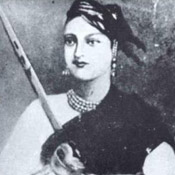
Rani
Lakshmibai was one of the leading warriors of the India's first struggle of
independence. She is a symbol of bravery, patriotism and honor. She was born on
19th November, 1835 at Poona. Her father Moropant Tabme was a court advisor,
and mother Bhagirathi was a scholarly woman. At a very early age she lost her
mother. Her father raised her in an unconventional way and supported her to
learn to ride elephants and horses and also to use weapons effectively. She
grew up with Nana Sahib and Tatya Tope, who were active participants in the
first revolt of independence.
In 1842, Rani Lakshmibai was married to Raja
Gangadhar Rao who was the Maharaja of Jhansi. After the marriage to Gangadhar
Rao she was called Lakshmi Bai. In 1851, she gave birth to a son but
unfortunately he died in his fourth month. After this tragic incident, Damodar
Rao was adopted by Maharaja of Jhansi as his son. Moved by the death of his son
and his poor health, Maharaja Gangadhar Rao also died on 21st November 1853.
When the Maharaja died, Rani Lakshmi Bai was just eighteen years old, but she
didn't lose her courage and took up her responsibility.
Lord Dalhousie, the Governor -General of India at that time,
was a very shrewd person who tried to take advantage of the misfortune of
Jhansi to expand the British Empire. The British rulers did not accept little
Damodar Rao, as the legal heir of late Maharaja Gangadhar Rao and Rani Lakshmi
Bai. Their plan was to annexe Jhansi on the ground that it did not have any
legal heir. In March 1854 Rani of Jhansi was granted an annual pension of
60,000 and was ordered to leave the Jhansi fort. She was firm on the decision
not to give up the dominion of Jhansi to the British.
For strengthening the defense of Jhansi Rani
Lakshmi Bai assembled an army of rebellions, which also included women. For
this great cause she was supported by brave warriors like Gulam Gaus Khan, Dost
Khan, Khuda Baksh, Sunder-Mundar, Kashi Bai, Lala Bhau Bakshi, Moti Bai, Deewan
Raghunath Singh and Deewan Jawahar Singh. She assembled 14,000 rebels and
organized an army for the defense of the city.
In March 1858, when the Britishers attacked
Jhansi, Rani Lakshmibai's army decided to fight and the war continued for about
two weeks. The army fought very bravely, even though Jhansi lost to the British
forces. After a fierce war when the British army entered Jhansi, Rani
Lakshmibai, tied her son Damodar Rao to her back fought bravely using two
swords with both her hands. She escaped to the fortress of Kalpi under the
cover of darkness and was accompanied by many other rebellions. She departed to
Gwalior and a fierce battle was fought between the British and the Rani's army.
On the unfortunate day of 18th June of 1858, this great warrior martyred her
life for India's freedom.

Ram Prasad Bismil was the
famous freedom fighter who was involved in the historic Kakori train robbery.
He was born in 1897 at Shahjahanpur, Uttar
Pradesh. His father Muralidhar was
an employee of Shahjahanpur Municipality. Ramaprasad learnt Hindi from his
father and was sent to learn Urdu from Moulvi. He wanted to join an English
medium school and got admission in one of such schools despite his father's
disapproval.
Ramaprasad joined Arya Samaj. He was also very
talented in writing poetry. All of his poems have the intense patriotic
feeling. He always wanted to see India as a free nation and dedicated himself
to the cause of the country. His team members consisted of great freedom
fighters like Ashfaqulla Khan, Chandrasekhar Azad, Bhagawati Charan, Rajguru
and many more. Ramaprasad used to take advices related to religion and politics
from great patriot and scholar Swami Somadevji.
The practice of Brahmacharya inspired him a lot and he became an ardent follower of it. He got himself engaged in the volunteering of Shahjahanpur Seva Samithi. In order to get people's attention, he published a pamphlet named 'A Message to My Countrymen'. Ramaprasad made many Hindi translations of Bengali writings. Some of his works include:
The Bolshevik Programme
A Sally of the Mind
Swadeshi Rang
Catherine
Yogic Sadhana of Rishi Aurobindo was translated
by Ramaprasad. All of his works were published in the series called 'Sushil
Mala'. He wrote his autobiography while he was in the cell.
On 9th August, 1925, Ram Prasad Bismil along
with his fellow followers looted the money of the British government from the
train while it was passing through Kakori, Lucknow. Except Chandrashekhar Azad,
all other members of the group were arrested. Ram Prasad Bismil along with
others were given capital punishment. This great freedom fighter of india was
executed on 19th December, 1927.
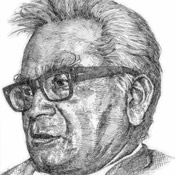
Ram Manohar Lohia, a
socialist political leader as well as a noted freedom fighter of India was born
in the village of Akbarpur, Uttar Pradesh on 23rd March, 1910.
He was born to Hira Lal, a patriot and a teacher
and Chanda. He did his intermediate from Benaras Hindu University. He did his
BA from Calcutta University in 1929. Lohia then flew to Germany whereby he
joined Berlin University and learnt German.
Rammanohar was highly influenced by Mahatma Gandhi ideas
which instigated the feeling of Swaraj (freedom) into him. 'Salt Satyagraha'
was his subject in the PhD thesis paper. Though he had a good affinity with Jawaharlal
Nehru but dissented with him on many political issues.
His first contribution as a
nationalist leader was organizing a 'hartal' on Bal Gangadhar Tilak's death. In
1928, he joined protests against the Simon Commission.
Achievements and notable incidents:
In Europe he organized 'Association of European Indians' .
Joined Indian National Congress and established Congress Socialist Party,1934.
He was elected the Secretary of All India Congress Committee (1936).
He was arrested on 7th June, 1940 and sentenced to two years imprisonment for writing an article 'Satyagraha Now' in Gandhiji's newspaper Harijan.
He published and circulated posters and pamphlets on 'Do or Die' during the 'Quit India Movement', 1942. He alongwith Aruna Asaf Ali edited a Congress Party monthly newspaper called 'Inquilab'.
Post-independence period:
Lohia took the leadership of building a dam on river Paniyari called 'Lohia Sagar Dam'.
Founded 'Hind Kisan Panchayat' to provide solution to the farmers.
Set up World Development Council and World Government to retain peace.
This great leader died on 12th October, 1967.
The Dr.Ram Manohar Lohia College of Law, Bangalore is named after him.

Maulana Abul Kalam Azad was
born on November 11, 1888 in Mecca, Saudi Arabia. A leading figure in India's
struggle for freedom, apart from being a noted writer, poet and journalist, he
adopted the pen name Azad (Free). In his childhood, he had a traditional
Islamic education, alongwith training in subjects like mathematics, philosophy,
world history and science by tutors at his home. Through his own efforts, he
learnt English, alongwith Western philosophy, history and contemporary
politics. He visited countries like Afghanistan, Iraq, Egypt, Syria and Turkey.
He opposed the partition of Bengal in 1905. He established an Urdu weekly
newspaper in 1912 named Al-Hilal. It was consequently banned in 1914, following
which he started a new journal, the Al-Balagh.
He published many works
criticizing the British rule and advocating self-rule for India. It was as a
leader of the Khilafat movement that he became close to Mahatma Gandhi.
He became the youngest President of the Indian National Congress in 1923.He
always supported the cause of Hindu-Muslim unity and opposed the demand for a
separate Muslim state of Pakistan. After India's independence, he served as the
first Minister for Education.
He served in the Constituent Assembly formed to
draft India's constitution and was elected to the Lok Sabha in 1952 and in
1957. In 1956, he served as president of the UNESCO General Conference in
Delhi. His exhaustive book on India's freedom struggle titled India Wins Freedom
was published in 1957. This great leader passed away on February 22, 1958

Mangal Pandey was born on 19
July 1827 in the village of Nagwa in the Ballia district of Uttar
Pradesh. A sepoy in the 34th
Regiment of the Bengal Native Infantry (BNI) of the English East India Company,
he entered the annals of Indian history for attacking his British officers,
sparking off the First War of Indian Independence or as the British termed it,
the Sepoy Mutiny of 1857. At Barrackpore near Kolkata on March 29, 1857, Pandey attacked and injured
his British sergeant, besides wounding an adjutant. A native soldier prevented
him from killing the adjutant and the sergant-major. He was arrested and
sentenced to death. He was hanged on April 8, 1857.
The primary reason behind Mangal Pandey's
behavior was because of a new type of bullet cartridge used in the Enfield P-53
rifle.
It was rumoured that the
cartridge was greased with animal fat (pig and cow fat), which neither Hindus
nor Muslims consumed. The cartridges had to be bitten off to remove the cover,
which was detested by both the Hindu and Muslim soldiers in the army. The
general feeling was that British intentionally did it. What added to the
discontent was that the Commandant of the 34th BNI(Bengal Native Infantry) was
a known Christian preacher.
There are many who have questioned whether
Mangal Pandey was a brave martyr or one who attacked his officer under
intoxication. The Bollywood movie, The Rising in 2005 was based on the life and
times of Mangal Pandey. His life was also the subject of a stage play titled
The Roti Rebellion.

One of
the well-known reformists and freedom fighter of India, Mahadev Govind Ranade
was born in 1842 at Biphad in Nasik. Known to be the mentor and political guru
of famous freedom fighters Gopal Krishna Gokhale, and Bal Gangadhar Tilak,he
himself was deeply involved in the freedom struggle of India.
Ranade was a social reformer who also believed
in ancient customs. He said that the social reforms should be introduced in
such a way that no violence is done to the ancient customs and traditions. His
method of attaining freedom was unique, he used to say that if we want to get
political freedom then we should free ourselves from the defects which lie
within us. He was against caste system, untouchability and was a strong
supporter of widow-remarriage. He believed in the emancipation of woman.
This social reformer along with friends Dr. Atmaram
Pandurang, Bal Mangesh Wagle and Yaman Abaji Modak founded the Prarthana Samaj,
a Hindu movement involved in social development. He also founded Poona
Sarvajanik Sabha and was one of the founders of the Indian National Congress.
After passing the LL.B. examination in 1864, he
was appointed as the Third Presidency Magistrate, Fourth Judge of the Small
Causes Court and Acting First Class Grade Judge at Poona. In 1893 he was
appointed a Judge of the Bombay High Court, a position which he held until his
death.
This reformer, freedom fighter and lover of
justice passed away on January 17, 1901.

Motilal Nehru was an Indian independence activist and leader of the Indian National Congress. He was born on May 6,1861 in Agra, India.
He was one of the first Indians to receive 'Western' education in India. He attended Muir College at Agra but failed to appear for his Bachelor of Arts degree examinations. Motilal Nehru then enlisted himself as a lawyer in the English courts. He became a barrister and settled in Allahabad. As a successful barrister, he earned the honor of appearing in the Privy Council of Great Britain.
Motilal Nehru was an active Indian independence activist. He was arrested by the British police during the Non-Cooperation Movement. Although Motilal Nehru was at first close to Mahatma Gandhi, later on he developed some differences with him and joined the Swaraj Party which tried to enter the British backed councils. The Swaraj Party became a failure; and Nehru returned to the Congress.
Motilal Nehru was the prime mover of the Nehru Commission (1928), the first constitution written by Indians which sought a dominion status for India within the British Empire. It was rejected by hard line Indians who saw it as an unfair document not representing the varied interests of the native Indian population.
Motilal Nehru's failing health kept him out of the pre-independent Indian politics when Mahatma Gandhi started the Salt Satyagraha. He was arrested in 1930, but was released quickly due to his deteriorating physical condition. This freedom fighter and a prominent figure in Indian National Congress passed away on February 6, 1931.
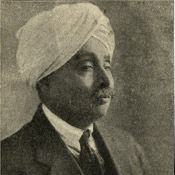
Lala Lajpat Rai, popularly
known as Punjab Kesari, was a famous freedom fighter of India. Born on January
28, 1865, he was the eldest son of Munshi Radha Kishan Azad and Gulab Devi. He
was one of the three extremists members of the Indian National Congress who
gave their life for the independence of India along with other two members Bal
Gangadhar Tilak and Bipin Chandra Pal. They were collectively known as
Lal-Bal-Pal. These extremist members of the Indian National Congress wanted
self government for India and they were the first Indian leaders to demand the
complete political independence for India
One of the important members of the Hindu Maha
Sabha, Lala Lajpat Rai was the president of the All India trade Union Congress
in 1920. He was the leader of the Punjab in protests against the Jallianwala Bagh
massacre. He also led the non-cooperation movement in Punjab. Lala Lajpat Rai
was highly influenced by socialist reformer Swami Dayananda Saraswati and was
the strong supporter of the Arya Samaj movement in Punjab.
He was at the forefront of
the protest against the Simon Commission. Leading the demonstration against the
Simon Commission he fell prey to the lathis of the British police and got
seriously injured. But undeterred by his injury he spoke vigorously:
"every blow aimed at me is a nail in the coffin of British
imperialism" at the meeting held same evening. Though his injuries were
healed but he could not recover completely and succumbed to his injuries on
November 17, 1928.
Apart from being a freedom fighter Lala Lajpat
Rai was a prolific writer also. Some of his books such as the United States of
America: A Hindu's Impression And A Study, History of the Arya Samaj, Swaraj
and Social Change and England's Debut to India: A Historical Narrative of
Britain's Fiscal Policy in India find special mention. This leader also founded
the Punjab National Bank and the Lakshmi Insurance Company.
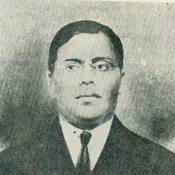
Lala Hardayal was a
revolutionary and a scholar who dedicated himself to the cause of Indian
Freedom. He was the General Secretary of the Gadar party and was a prominent
leader in the Gadar movement. He traveled to many parts of the world and helped
to spread the freedom movement.
Lala was born on October 14, 1884 at Delhi. From the Government College of Lahore, he
secured the Master Degree in English Literature. He pursued further education
and was awarded a State Scholarship by the Government of India. As a result he
went to study at Oxford, England. While in England he involved himself into the
Indian struggle for freedom.
In England he came in close
contacts with revolutionaries and reformers like C.F.Andrews, S.K.Verma and
Bhai Permanand. He raised his voice against the British Oppression of Indians
and resigned from his scholarship. He returned to India and dedicated himself
to political activities in Lahore. He left his family life to adopt the life of
a monk. During this period, he contributed articles to the Modern Review and
The Punjabi and his association with the Revolutionaries became prominent. He
left India for London in 1908 as the situation in India was very tense. In
order to propagate the freedom movement further, Lala crossed the borders of
Paris, West Indies and South America to reach USA.
In USA, he helped to organize the Gadar
movement. Sensing trouble, the British Government pressed the U.S Government to
arrest him. Hence he migrated to Germany and further to Sweden and England only
to go back to USA where he passed away.
Apart from his political and patriotic contribution,
Lala has contributed a lot in the field of Literature and earned his Doctorate
on Buddhist Sanskrit Literature. He breathed his last in Philadelphia, USA on 4
th March 1939.
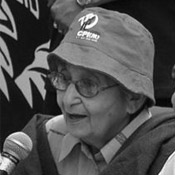
aptain
Laxmi Sehgal is one of the lion hearted women, India ever had. She picked up
the Gun for the Indian National Army (INA) founded by Netaji Subash Chandra
Bose and led it like a tigress for the struggle for Indian freedom.
Laxmi Sehgal was born in 1914 to a traditional
Tamil family. She got her first patriotic lessons from her mother who was a
member of the Congress herself. She completed her degree in medicine from the
Madras Medical College and went to Singapore for a career as a doctor, however
something very different was waiting for her.
Singapore at that time was ruled by British and they had to
surrender when the Japanese invaded the country. Thousands of Indians were
taken as prisoners. At this juncture, Netaji invited the Indian prisoners to
join the INA and fight against the British. Laxmi was one of them and Netaji
was impressed by her courage and asked her to lead the Rani Jhansi Regiment.
She fought like a tigress against the British in the jungles of Burma.
Today octogenarian, Captain Laxmi Sehgal still
has the same indomitable attitude and is a practicing Doctor in Kanpur. She is
a major attraction to the seminars and conference and is still working for the
betterment of the Society.
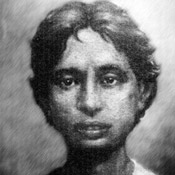
Khudiram Bose was a freedom
fighter, who was one of the youngest revolutionaries of the Indian independence
movement. He was born on 3rd December 1889. Trailokyanath Basu, his father was
a Tahsildar of the town and mother Lakshmipriya Devi was a religious lady. His
birth place was Bahuvaini in Medinipur district, West Bengal.
Khudiram Bose was influenced by the notion of
karma in the Bhagvad Gita , and was involved in revolutionary activities to
free mother India from the clutches of British rule. Dissatisfied with the
British policy of the partition of Bengal in 1905, he joined Jugantar - the
party of revolutionary activists. At the tender age of sixteen, Bose left bombs
near police stations and made government officials his victims. On the charges
of carrying out a series of bomb attacks he was arrested.
In Muzzafarpur, Bihar,on
30th April, 1908 Khudiram Bose and Prafulla Chaki planned to assasinate the
Chief Presidency Magistrate Kingsford. The magistrate was known for his blatant
judgements against the freedom fighters. They waited for Kingsford's carriage
to come in front of the gate of European Club and blew up a carriage which was
not carrying Kingsford. As a result of this unfortunate incident two innocent
British ladies - Mrs.Kennedy and her daughter were killed. Both the
revolutionaries fled the crime scene. Later Prafulla committed suicide and
Khudiram was arrested.
On the charges of bomb attacks carried out by
Khudiram Bose, he was sentenced to death at the age of 19.He was hanged to
death on 11 August 1908
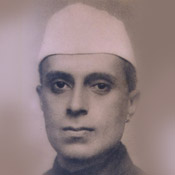
Jawaharlal Nehru, one of the
central figures of Indian politics during India's struggle for independence and
the first Prime Minister of India was born on 14th November 1889 in Allahabad.
As a son of an influential Indian barrister and politician he grew up in the
lap of luxury with governesses and tutors. His early schooling was in India and
at the age of 15 he went to England to attend the Harrow School. Later he
joined Trinity College to study natural science. After this he joined Inner
Temple in London to train himself as a barrister. He returned to India in 1912
and joined Allahabad High Court Bar, Uttar
Pradesh. On 8th February 1916, at
the age of 27 he married Kamla Kaul. Next year their only daughter, Indira, was
born. 1920 proved to be the turning point in the life of anglicized Jawaharlal
Nehru. Once traveling in train he overheard General Dyre gloating over
Jallianwala Bagh massacre. He vowed to fight the imperial rule and joined
Indian politics. He was strongly influenced by the Gandhian views and was the
supporter of Mahatma Gandhi in freedom struggle. Under the influence of
Gandhi he, along with his family, abandoned his western possessions and lifestyle
and started using 'Swadeshi'. He was a very good orator and a prominent
organizer. Soon he became one of the popular political leaders of north India.
In 1924 he was elected as the president of Municipal Corporation of Allahabad.
Dissatisfied by British officials and corruption amongst civil servants, he
resigned from his post within two years. He was not in the favor of dominion
status for India within the British Empire, as recommended by his father. He
strongly criticized the Nehru report prepared by his father Motilal Nehru.
Jawaharlal Nehru, the man
who made a tryst with destiny, was a leader who kept his promise and led India
to freedom. The first Prime Minister of india, he came to the
forefront of the Indian freedom struggle after Jallianwalah Bagh massacre.
Devoted to the cause of freedom, he was a representative of a whole new
generation of India. World Peace and all round development of India were the
main concerns of this great statesman. 'Chacha Nehru', as he was fondly called
by children, was amongst the prominent names behind the establishment of the
Non Aligned Movement (NAM).
Pt Jawaharlal Nehru was not just a man or a
Prime Minister, he was a phenomenon who gave shape to the dreams of independent
India and permeated the lives of Indians.
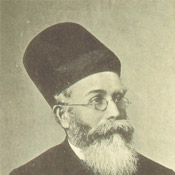
Dadabhai Naoroji was born to
a poor Parsi family in Bombay,Maharashtra on September 4, 1825. When Dadabhai Naoroji was
just four years, his father Naoroji Palanji Dordi died and all the
responsibilities fell on his mother Maneckbai. His mother never complained and
carried out her responsibilities with great courage. Naoroji's marriage was
fixed at the very young age of 11 to Gulbai.
Dadabhai Naoroji had a wonderful academic career
at the Elphinstone Institution. When he was just 25 he became the assistant
professor at Elphinstone Institution. After four years he was chosen as
Professor of Mathematics and Natural Philosophy in the same institution. He was
called the "The Promise of India" by Professor Orlebar. On 1st August
1851 he established the Rahnumae Mazdayasne Sabha to renovate the Zoroastrian
religion.
In his work Poverty and UnBritish rule in India Dadabhai condemned British policies and explained how India was losing all its wealth and possessions. Naoroji set off for England on June 27,1855 to be a part of the production firm of the mercantile Cama family. Naoroji tried to inform and teach the British public about their tasks and duties. He tried to illuminate the British citizens about the torture and cruelty of the British Raj.To fight for the rights of Indians, he formed the East India Association. Naoroji helped in establishing the Indian National Congress and became its President thrice. In 1883 he was re- elected to the Bombay Municipal Council. An example of his modesty was that he refused the title of "Sir" given to Dadabhai by the British. The Shah of Iran wanted to honor him but he refused. In 1916 he returned to England but fell sick. He started suffering from bronchitis. He was looked after by his granddaughters Mrs. Nargis and Gosi Captain .He returned to India in October. Dr. Mehrbanoo took charge of his health. Dadabhai Naoroji left for his heavenly abode on June 30, 1917.
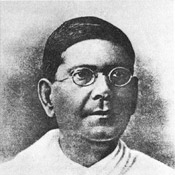
The great lawyer
Chittaranjan Das was born on Nov 5, 1870.He belonged to a highly educated
family with rich cultural surroundings. Bhuvan Mohan, his father was a
solicitor by profession and also worked as a reporter and editor in the English
church weekly, the Brahmo Public Opinion.
Chittaranjan Das completed his graduation in
1890 from Presidency College, Kolkata, West Bengal. He went abroad to England to sit for the Indian
Civil Service examination. He failed to clear the examination. When he returned
to India in 1893, he began practicing law in the Calcutta High Court.His career
rose to fame when he successfully defended Aurobindo Ghose in the 1908 Alipur
bomb case. Das set up an undergraduate union and also raised his voice for the
use of Bengali language in university examinations. He substantially
contributed with Bipin Chandra Pal and Aurobindo Ghose in writing Bande
Mataram, an English weekly. He also tried to instill the ideas of Swaraj among
the young Indian freedom fighters. He was involved in active politics from 1917
to 1925.
Chittaranjan Das also put
the idea of reconstructing villages through the incorporation of local self-government
and cooperative credit society systems. He also wanted to give a new face to
the cottage industry. He became a prominent figure in the Indian National
Congress, known for his innate skills in public speaking and political insight.
He joined hands with Gandhi in the Non
-Cooperation Movement. In 1921, along with his wife and son, he was arrested by
the British Government. Das realized that political stability could only be
brought in India by reuniting the Hindus and Muslims. He always believed in
self-rule and attained the title of Deshabandhu meaning friend of the country.
Das always had a flair for writing and this was
evident from his literary magazines, Narayan, Mala, Sagar Sangit,
Kishore-Kishoree and Antaryami.
Like Gandhiji, Das believed in the idea of
non-violence. He felt that education was mandatory for our country. He laid
emphasis on women liberation and aided Ishwar Chandra Vidyasagar's movement for
widow re-marriage. He passed away on June 16, 1925.
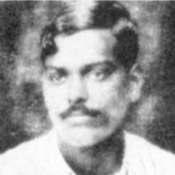
A daring freedom fighter and
a fearless revolutionary, Chandra Shekhar was born on 23rd July 1906 in Bhavra, Madhya Pradesh. Involved in incidents such as Kakori Train
Robbery, Assembly Bomb incident and the shooting of Saunders at Lahore, to
avenge the killing of Lala Lajpat Rai, he was the face of revolutionary India.
Son of Pandit Sitaram Tiwari and Jagarani Devi, he
received his earlier education at Bhavra and was sent to the Sanskrit Pathshala
at Varanasi, Uttar
Pradesh for higher
studies. At a very young age he got involved in revolutionary activities. He joined
the non-cooperation movement launched by Mahatma Gandhi.
Caught by the British police while indulging in revolutionary activities he was
sentenced to 15 whiplashes as his first punishment. At that time he was mere 15
years old. It was after this incident that Chandrashekhar assumed the title of
Azad and came to be known as Chandrashekhar Azad.
Disillusioned with Mahatma
Gandhi's suspension of non-cooperation movement due to Chauri-Chaura incident,
he turned extremist. Chandrashekhar Azad was a believer in socialism,he along
with other revolutionaries formed 'The Hindustan Socialist Republican
Association'. He was a mentor to many revolutionaries including Bhagat Singh.
He wanted complete independence for India by any means. Chandrashekhar Azad
killed British Assistant Supretendent of Police John Poyantz Saunders to avenge
the death of Lala Lajpat Rai. He remained a terror for British government as
long as he was alive. On 27th February 1931, betrayed by one of the associates,
he was besieged by the British police in Alfred Park, Allahabad . He fought
valiantly but seeing no other way he shot himself and fulfilled his resolve to
die a 'free man'.
He his still a hero for millions of Indians and
many movies such as Shaheed Bhagat Singh, The Legend of Bhagat Singh and 23rd
March 1931 has been made on his life.
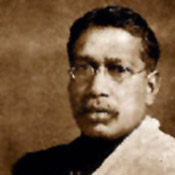
Bipin Chandra Pal (1858-1932) was a noted politician, journalist, an eminent orator and one of the three famous patriots, known as the trilogy of Lal Bal Pal. The other two were Lala Lajpat Rai and Bal Gangadhar Tilak. He was one of the main architects of the Swadeshi movement. He stood against the partition of West Bengal.
Pal was born on November 7, 1858 in at Sylhet
(now in Bangladesh). He came to Calcutta and got admitted in the Presidency
college but left studies before graduating. However he had remarkable Literacy
competence and studied various books extensively. He started his career as
school master andworked as a librarian in the Calcutta Public Library. Here he
came in contact with Keshav Chandra Senand others like Shivnath Shastri,
B.K.Goswami and S.N.Banerjee. Their influence attracted him to join active
politics. Soon he got inspired by the extremist patriotism of Tilak, Lala and
Aurobindo. In 1898 he went to England to study comparative theology but came
back to preach ideal of Swadeshi through himself in the non cooperation
movement due to his difference of view points with other leaders of the
movement.
A journalist himself, Pal
used his profession in spreading patriotic feelings and social awareness. He
was the editor of the 'Democrat', the 'Independent' and many other journals and
newspapers. He published a biography of Queen Victoria in Bangla. 'Swaraj and
the Present Situation' and 'The Soul of India' are the two of his many books
written by him.
Pal had a 'never say die' attitude and he lived
by his Principle. He revolted against the evils and ill practices of Hinduism.
He was a member of the Brahmo Samaj and believed in the equality of men and
women. He encouraged widow marriages and female education. India lost one of
it's most ardent patriot when he passed away in 1932.
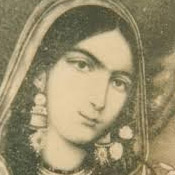
Begum Hazrat Mahal was a
great Indian freedom-fighter who played a major role during India's First War
of independence (1857-58). She was also known as the Begum of Awadh (Oudh) and
was the wife of the then Lucknow ruler, Nawab Wajid Ali Shah. Her maiden name
was Muhammadi Khanum, and she was bestowed the title 'Hazrat Mahal' after the
birth of their son, Birjis Qadr. Behind Begum Hazrat Mahal's graceful nature
and physical charm lay the qualities of a strong leader and an adroit
strategist, which were strongly witnessed through her contributions to India's
first struggle for independence against the British.
In the 1850's, when the British were ruthlessly
expanding their control across India, they came across the province of Oudh,
which was then an erstwhile seat of art, culture and literature. They
eventually annexed Oudh in 1856, exiling Nawab Wajid Ali Shah to Kolkata, thus leaving the kingdom without a leader and
in a chaotic mess. It was then when Begum Hazrat Mahal took over the reigns,
despite her divorce from the Nawab, she took charge of the affairs of the state
of Awadh.
Combining strengths with the revolutionary forces of the First War of Independence, she was soon successful in seizing Lucknow from the British. She crowned her son as royal heir of Awadh. Named the 'Lakshmi Bai' of Oudh, she supported fellow mutineers like Nana Saheb immensely, counter-offered the British offers provided to great rulers like Rana Jang Bahadur of Nepal, and greatly motivated the masses to rebel against the British Raj. Such was her devotion and pledge to her people that the Begum even went on to fortify the city of Lucknow against the advancing British troops. After a long siege, Lucknow was again re-captured by the British, forcing Hazrat Mahal to retreat in 1858. She spent the remaining years of her life in Nepal, passing away in 1874 in Kathmandu.
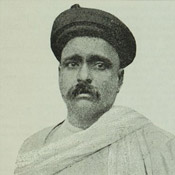
One of the stalwarts of
India's freedom movement, Bal Gangadhar Tilak also known as Lokmanya Tilak was
born in Ratnagiri,Maharashtra on
July 23, 1856. He is known for his famous quote " Self Rule is our
birthright, and We shall have it! " He was reverently addressed as
Lokmanya (or "Beloved of the people" or "Revered by the
world").
After completing his graduation, Tilak began
teaching in a private school in Pune and went on to become a journalist. He was
very vocal in his criticism of the Western education system and set up the
Deccan Education Society to educate India's youth. Tilak founded the Marathi
daily Kesari (Lion), in the pages of which he actively propagated the cause of
freedom. He joined the Indian National Congress. He was known for his hardcore
Hindu views. In 1907, the Congress Party split into the two factions.
The British authorities charged Tilak with sedition and he was imprisoned from 1908 to 1914 in Mandalay, Burma. He re-joined the Indian National Congress in 1916 and helped to found the All India Home Rule League in 1916-18 . Tilak was not in favour of Mahatma Gandhi strategy of non-violent protest. He wrote many books on Indian culture, history and Hinduism like The Orion or Researches into the antiquities of the Vedas (1893), Arctic Home in the Vedas, Geetarahasya and others. He passed away on August 1, 1920

Khan
Abdul Gaffar Khan is one of the tallest freedom fighter, not only in sheer
physical height but also in his contributions and sacrifices. He dedicated his
life for the betterment of his fellow country men and hugely inspired the
Pathans of the north-west frontier to follow the Gandhian values of
non-violence and non-possession. No wonder he was described as the 'Frontier
Gandhi'.
Abdul Gaffar Khan was born in 1890 to Khan
Behram Khan of Utmanzai village, Peshwar. Despite being illiterate both of his
parents were broad minded and wanted their children to get proper education.
Abdul was sent to a Missionary school in Peshwar after his primary education.
Abdul was selected in the British Indian Army but soon left the army after
observing the ill-treatments and insults the Indians faced there.
The Pathans at that time were mostly uneducated
and unorganized. Moreover the British wanted them to keep them backward in
order to control them easily. Abdul realized the need of the hour and opened
schools for children and women. For this Abdul was jailed and brutally treated.
Despite the British injustices and the threats, the schools started
flourishing. After his release he published a national newspaper- 'Pakhtun'
which became very popular. At this juncture, the progressive king- Amanullah
came forward in his support. The British and the local Mullahs conspired to
destroy these developments. In 1928, Abdul came to India and met Gandhiji and
Nehruji. Impressed and inspired by the nationalistic fervour, Abdul established
an organization to bring social reforms.
It was called Khudai Khidmatgars and every
member of the organization vowed to practice non-violence, brotherhood and
serve humanity in the name of God. The British tried every possible way to
destroy the movement. They attacked, they destroyed, they killed, they tortured
but couldn't make the Pathans to break their vows. Khan was put to the prison
again and inhumanly tortured. He did not get any support from the Muslim League
but the Congress promised help, if the Pathans join the Indian Freedom
Struggle. The Congress sent reports allover India, Engalnd and even in America
about the sorry state of the Pathans.
At last, after a long period of imprisonment,
Khan was released in 1945. He passed away in 1998 and thousands of people
walked in his funeral procession to pay homage to their hero.
Sorry for any mistake & if i forgot Anyone
Thanks to www.mapsofindia.com
comment:
p_commentcount